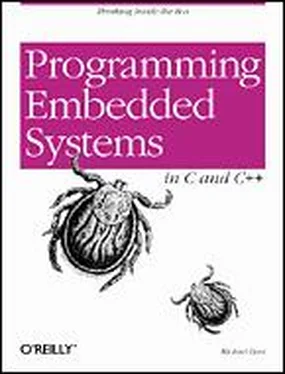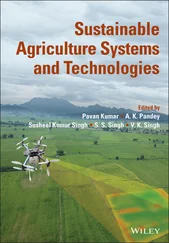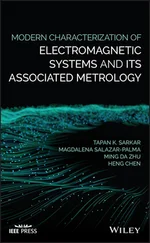The contents of an object file can be thought of as a very large, flexible data structure. The structure of the file is usually defined by a standard format like the common object file format (COFF) or extended linker format (ELF). if you'll be using more than one compiler (i.e., you'll be writing parts of your program in different source languages), you need to make sure that each is capable of producing object files in the same format. Although many compilers (particularly those that run on Unix platforms) support standard object file formats like COFF and ELF ( gcc supports both), there are also some others that produce object files only in proprietary formats. If you're using one of the compilers in the latter group, you might find that you need to buy all of your other development tools from the same vendor.
Most object files begin with a header that describes the sections that follow. Each of these sections contains one or more blocks of code or data that originated within the original source file. However, these blocks have been regrouped by the compiler into related sections. For example, all of the code blocks are collected into a section called text , initialized global variables (and their initial values) into a section called data , and uninitialized global variables into a section called bss .
There is also usually a symbol table somewhere in the object file that contains the names and locations of all the variables and functions referenced within the source file. Parts of this table may be incomplete, however, because not all of the variables and functions are always defined in the same file. These are the symbols that refer to variables and functions defined in other source files. And it is up to the linker to resolve such unresolved references.
All of the object files resulting from step one must be combined in a special way before the program can be executed. The object files themselves are individually incomplete, most notably in that some of the internal variable and function references have not yet been resolved. The job of the linker is to combine these object files and, in the process, to resolve all of the unresolved symbols.
The output of the linker is a new object file that contains all of the code and data from the input object files and is in the same object file format. It does this by merging the text , data , and bss sections of the input files. So, when the linker is finished executing, all of the machine language code from all of the input object files will be in the text section of the new file, and all of the initialized and uninitialized variables will reside in the new data and bss sections, respectively.
While the linker is in the process of merging the section contents, it is also on the lookout for unresolved symbols. for example, if one object file contains an unresolved reference to a variable named foo and a variable with that same name is declared in one of the other object files, the linker will match them up. The unresolved reference will be replaced with a reference to the actual variable. In other words, if foo is located at offset 14 of the output data section, its entry in the symbol table will now contain that address.
The GNU linker ( ld ) runs on all of the same host platforms as the GNU compiler. It is essentially a command-line tool that takes the names of all the object files to be linked together as arguments. For embedded development, a special object file that contains the compiled startup code must also be included within this list. (See Startup Code later in this chapter.) The GNU linker also has a scripting language that can be used to exercise tighter control over the object file that is output.
Startup Code
One of the things that traditional software development tools do automatically is to insert startup code. Startup code is a small block of assembly language code that prepares the way for the execution of software written in a high-level language. Each high-level language has its own set of expectations about the runtime environment. For example, C and C++ both utilize an implicit stack. Space for the stack has to be allocated and initialized before software written in either language can be properly executed. That is just one of the responsibilities assigned to startup code for C/C++ programs.
Most cross-compilers for embedded systems include an assembly language file called startup.asm, crt0.s (short for C runtime), or something similar. The location and contents of this file are usually described in the documentation supplied with the compiler.
Startup code for C/C++ programs usually consists of the following actions, performed in the order described:
1. Disable all interrupts.
2. Copy any initialized data from ROM to RAM.
3. Zero the uninitialized data area.
4. Allocate space for and initialize the stack.
5. Initialize the processor's stack pointer.
6. Create and initialize the heap.
7. Execute the constructors and initializers for all global variables (C++ only).
8. Enable interrupts.
9. Call main .
Typically, the startup code will also include a few instructions after the call to main . These instructions will be executed only in the event that the high-level language program exits (i.e., the call to main returns). Depending on the nature of the embedded system, you might want to use these instructions to halt the processor, reset the entire system, or transfer control to a debugging tool.
Because the startup code is not inserted automatically, the programmer must usually assemble it himself and include the resulting object file among the list of input files to the linker. He might even need to give the linker a special command-line option to prevent it from inserting the usual startup code. Working startup code for a variety of target processors can be found in a GNU package called libgloss .
If the same symbol is declared in more than one object file, the linker is unable to proceed. It will likely appeal to the programmer — by displaying an error message — and exit. However, if a symbol reference instead remains unresolved after all of the object files have been merged, the linker will try to resolve the reference on its own. The reference might be to a function that is part of the standard library, so the linker will open each of the libraries described to it on the command line (in the order provided) and examine their symbol tables. If it finds a function with that name, the reference will be resolved by including the associated code and data sections within the output object file. [6] Beware that I am only talking about static linking here. In non-embedded environments, dynamic linking of libraries is very common. In that case, the code and data associated with the library routine are not inserted into the program directly.
Unfortunately, the standard library routines often require some changes before they can be used in an embedded program. The problem here is that the standard libraries provided with most software development tool suites arrive only in object form. So you only rarely have access to the library source code to make the necessary changes yourself. Thankfully, a company called Cygnus has created a freeware version of the standard C library for use in embedded systems. This package is called newlib . You need only download the source code for this library from the Cygnus web site, implement a few target-specific functions, and compile the whole lot. The library can then be linked with your embedded software to resolve any previously unresolved standard library calls.
After merging all of the code and data sections and resolving all of the symbol references, the linker produces a special "relocatable" copy of the program. In other words, the program is complete except for one thing: no memory addresses have yet been assigned to the code and data sections within. If you weren't working on an embedded system, you'd be finished building your software now.
Читать дальше












